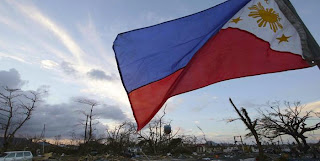More powerful than Hurricane Katrina that hit
the United States in 2005, Typhoon Yolanda is one of the costliest and
deadliest storms to hit the Philippines in recent years, displacing over three
million people, damaging over a million homes, and killing more than five
thousand. But we are awed by the resilience of the Filipino people and their
admirable determination to overcome the difficulties together as a nation. I
believe that, with the Filipino’s bayanihan or cooperative spirit and the
support of the global community, the Philippines will bounce back stronger and
more resilient than ever.
Even while the country is still
grappling with relief work, the government is already formulating a recovery
and reconstruction plan. This is a major step in the right direction. The World
Bank Group (WBG) has been supporting this process.
The World Bank Group has quickly
deployed its disaster risk management specialists from a variety of fields to
help the government assess damage and identify priority areas for immediate
short-term recovery and reconstruction support. Our technical team has obtained
remote sensing images to assess damage on the ground without interfering with
the ongoing humanitarian aid and relief efforts.
At the request of the government,
our team is also providing guidance on disaster-resilience design options for
housing, health facilities, schools and public facilities that can withstand
super typhoons as well as resist high magnitude earthquake and severe flooding.
This is very important: places
like schools, hospitals and other public buildings should be safe havens during
disasters and built to that standard. When I was growing up in Japan, the
government always told us to head for the nearest school when warnings for
strong storms, floods and other disasters are sounded because those facilities
were designed and built as a safe haven for the community during calamities.
Private sector recovery as well
as private sector leadership in the recovery of the region is crucial. Hence,
the International Finance Corporation (IFC), a member of the World Bank Group
focused on the private sector, is developing risk share facilities and advisory
services to help small and medium enterprises get back on their feet. It is
also looking into extending financing to power transmission and generation
companies to repair typhoon damage, as well as for the rebuilding of hotel and
retail facilities in affected areas. Consultations on how best the private
sector can lead the recovery process are underway.
Recovery and reconstruction will require a
significant amount of resources. It’s heartening to note that development
partners have quickly mobilized sources of funding. On the part of the World
Bank Group, we have committed $500 million in budget support. In addition, we
have funds ready to help typhoon-affected communities rebuild community-level
livelihood-related infrastructure through the $480-million National
Community-Driven Development Project (NCDDP). This could quickly help restore
basic social services including water, schools, health facilities, local roads,
and bridges. The project will empower community members themselves to lead the
reconstruction effort, by offering a transparent way for people to determine
their own needs.
One of the most important lessons
that the World Bank Group has learned in Aceh which was hit by the Indian Ocean
tsunami in 2004 and Java by an earthquake in 2006 is that, given proper
support, communities can and should take the lead in their own recovery.
Community housing programs for permanent shelters in these areas delivered
housing faster, at cheaper cost and of higher quality. Community members also
led in the provision of community infrastructure including water supply, access
roads and bridges, markets, and schools. Community members work among
themselves to ensure quality and quick completion. This was coupled with the
oversight and assistance of local facilitators and engineers.
In India, owner-driven reconstruction has
proven more effective than the use of contractors. We have learned that where
people were given funds to repair their houses, most families actually
economized to build new units instead. Homeowners hire their neighbors for
repairs and construction, thus creating jobs in the disaster-affected areas.
Where people were put in charge of the process, the houses built were more
adapted to each family’s requirements and preferences.
More importantly, equipping
typhoon victims to take the lead in their own recovery would have great
psychological benefits. People’s participation in reconstruction could help
lift their spirits.
Given the scale of the devastation
in typhoon-affected areas, reconstruction cannot be completed overnight.
Reconstruction in Indonesia in 2004 had to be done in phases to meet evolving
people’s needs while emphasizing speed, quality and sustainability.
The first phase required fast
action focused on housing, logistics and transport, small infrastructure, and
debris cleanup.
The second phase, where quality
is important, tackled more complex needs of communities for major
infrastructure such as roads, bridges, drainage, ports and water systems.
The third phase is for
sustainability focused on longer-term livelihoods, economic development and
capacity building to sustain the impact of the reconstruction.
Not everything can be done at
once. Recovery plans need to be prioritized and phased. Reconstruction will
take several years to complete. Hence, the country and its leaders will need
patience, perseverance, and persistence. But we believe that Filipinos will
overcome these challenges. As World Bank Group President Jim Yong Kim told
Philippine President Aquino in their recent conversation, the World Bank Group
is steadfast in its commitment to help the country on its way to recovery and
will continue to support the Filipino people’s efforts to build a more
resilient and prosperous Philippines.
Credit to
www.philstar.com/































No comments:
Post a Comment